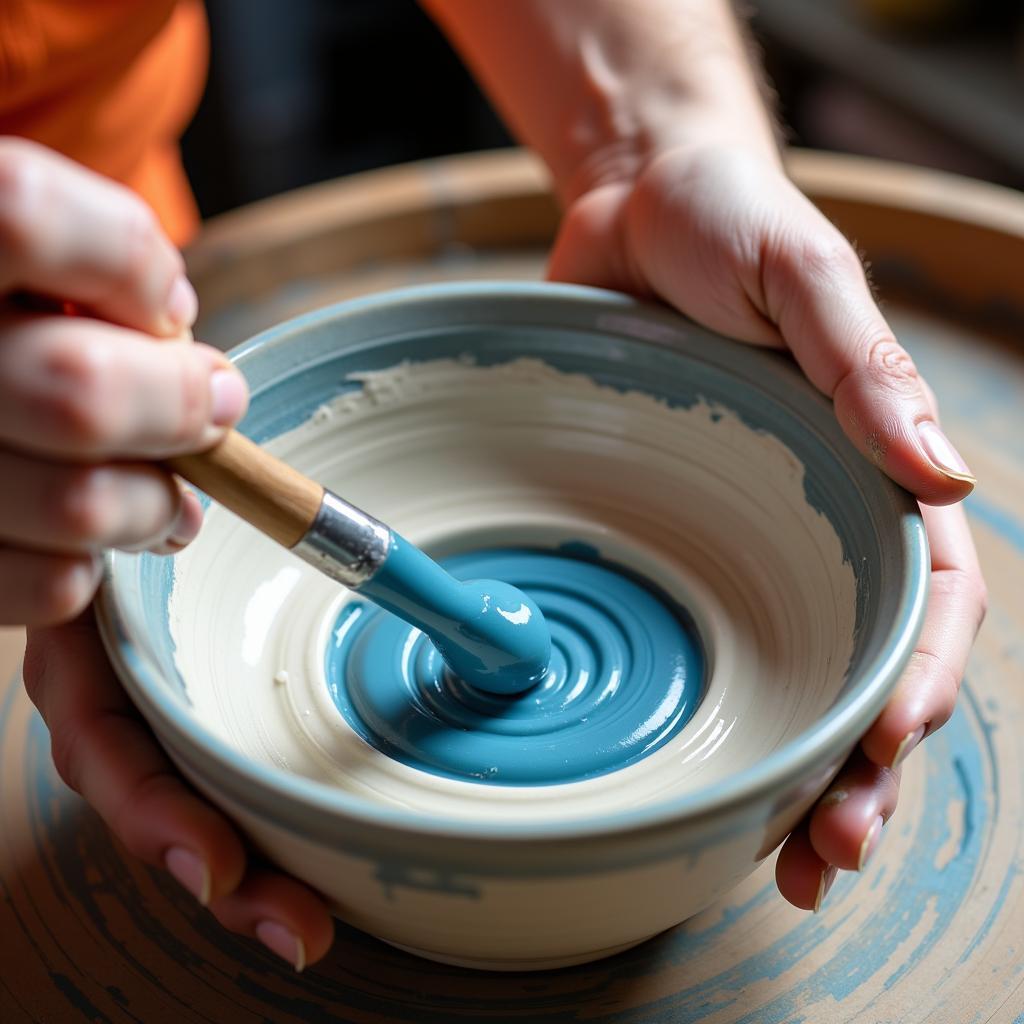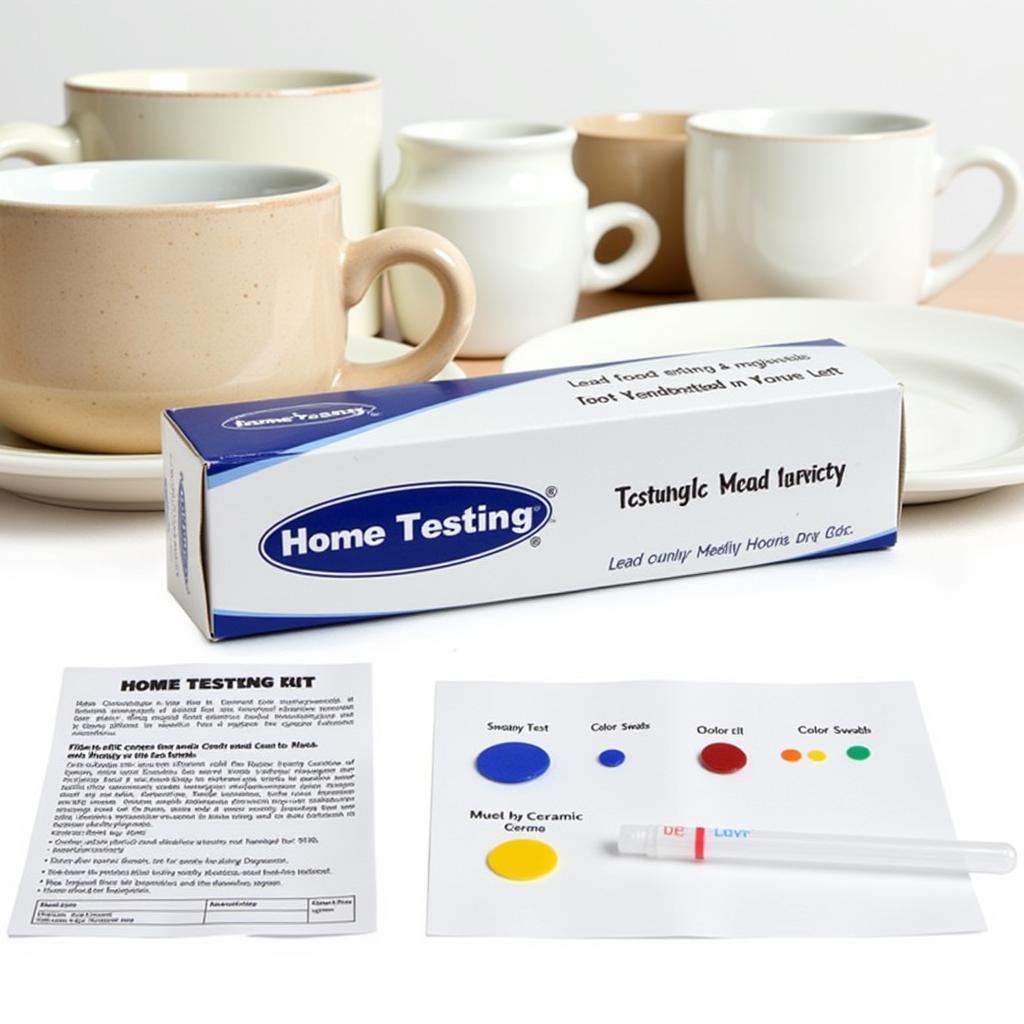Underglaze food safety is a crucial concern for anyone working with or collecting ceramics. Understanding the factors that determine whether an underglaze is food safe will help you make informed decisions and enjoy your ceramic pieces with peace of mind. Let’s explore the intricacies of underglaze safety and equip you with the knowledge you need to create or choose safe and beautiful ceramic ware.
What Makes an Underglaze Food Safe?
The food safety of an underglaze depends primarily on its ingredients and the firing process. Underglazes are essentially colored slips applied to pottery before the glaze. While some commercially available underglazes are explicitly labeled as food safe, others might not be, requiring careful examination of their composition. Harmful heavy metals like lead and cadmium can leach into food from underglazes that aren’t formulated or fired correctly.
A properly formulated food-safe underglaze should be free from toxic ingredients. Look for underglazes specifically marked as “lead-free” and “cadmium-free.” The firing temperature also plays a vital role. Sufficiently high temperatures ensure the underglaze is fully vitrified, meaning it becomes a non-porous glass-like substance that prevents leaching.
 Applying Food-Safe Underglaze to Ceramics
Applying Food-Safe Underglaze to Ceramics
Understanding the Risks of Non-Food Safe Underglazes
Non-food safe underglazes pose a health risk due to the potential leaching of toxic metals. These metals can accumulate in the body over time, leading to various health problems. Lead, for example, is particularly dangerous, especially for children. It can interfere with brain development and cause neurological damage. Cadmium is another concern, linked to kidney damage and other health issues.
Choosing certified food-safe underglazes or having your ceramics tested by a reputable lab are essential steps in protecting yourself and your loved ones.
Testing for Underglaze Food Safety
How can you be absolutely sure your underglazes are food safe? Testing is the most reliable way to confirm the safety of your ceramic pieces. Several methods exist, including home testing kits and professional laboratory analysis. Home kits offer a quick and easy initial assessment, but professional testing provides more comprehensive and accurate results.
 Home Testing Kit for Underglaze Food Safety
Home Testing Kit for Underglaze Food Safety
Choosing the Right Test for Your Needs
Home tests can be a good starting point, particularly for hobbyists. However, if you are selling your ceramics or have concerns about specific heavy metals beyond lead, professional testing is highly recommended. Labs can test for a broader range of heavy metals and provide detailed reports.
Is Your Vintage Pottery Food Safe? Tips for Older Ceramics
Many people inherit or collect vintage pottery, adding charm and history to their homes. However, older ceramics are more likely to contain lead or cadmium in their glazes and underglazes. Using antique or vintage pottery for food can be risky without proper testing.
A simple vinegar test can provide a preliminary indication. If the vinegar reacts with the glaze, turning cloudy or changing color, it suggests the glaze may not be stable and could potentially leach harmful substances. However, this is not a definitive test, and professional analysis is still the most reliable method for determining food safety.
 Collection of Vintage Ceramic Plates
Collection of Vintage Ceramic Plates
Conclusion: Ensuring Underglaze Food Safety
Underglaze food safety should be a top priority for every potter and ceramic enthusiast. Understanding the composition of your underglazes and ensuring they are properly fired are crucial steps. When in doubt, testing is the best way to confirm food safety and enjoy your ceramics with complete confidence. Is Underglaze Food Safe? Yes, it can be, with careful selection and proper handling. For any further inquiries, please don’t hesitate to reach out. Contact us at 02437655121, email us at minacones@gmail.com, or visit us at 3PGH+8R9, ĐT70A, thôn Trung, Bắc Từ Liêm, Hà Nội, Việt Nam. Our 24/7 customer service team is always ready to assist you.
FAQ
- What are the common signs that an underglaze might not be food safe?
- Where can I get my ceramics professionally tested for lead and cadmium?
- Are all commercially available underglazes labeled as food safe?
- How does the firing temperature affect the food safety of underglazes?
- What are the health risks associated with using non-food safe ceramics?
- Are there any DIY methods to make a non-food safe underglaze safer?
- What precautions should I take when using vintage pottery for food?
Common Scenarios:
- Scenario 1: You are a beginner potter and want to ensure your handmade mugs are safe for everyday use.
- Scenario 2: You inherited a beautiful set of vintage plates and want to know if they are safe for serving food.
- Scenario 3: You are buying ceramics online and are unsure about the food safety of the glazes used.
Further Reading:
- Explore our blog post on “Choosing the Right Glaze for Your Ceramics”
- Learn more about “Ceramic Safety and Health Precautions” on our website.
Contact us: For any support, please contact Phone Number: 02437655121, Email: minacones@gmail.com Or visit our address: 3PGH+8R9, ĐT70A, thôn Trung, Bắc Từ Liêm, Hà Nội, Việt Nam. We have a 24/7 customer care team.